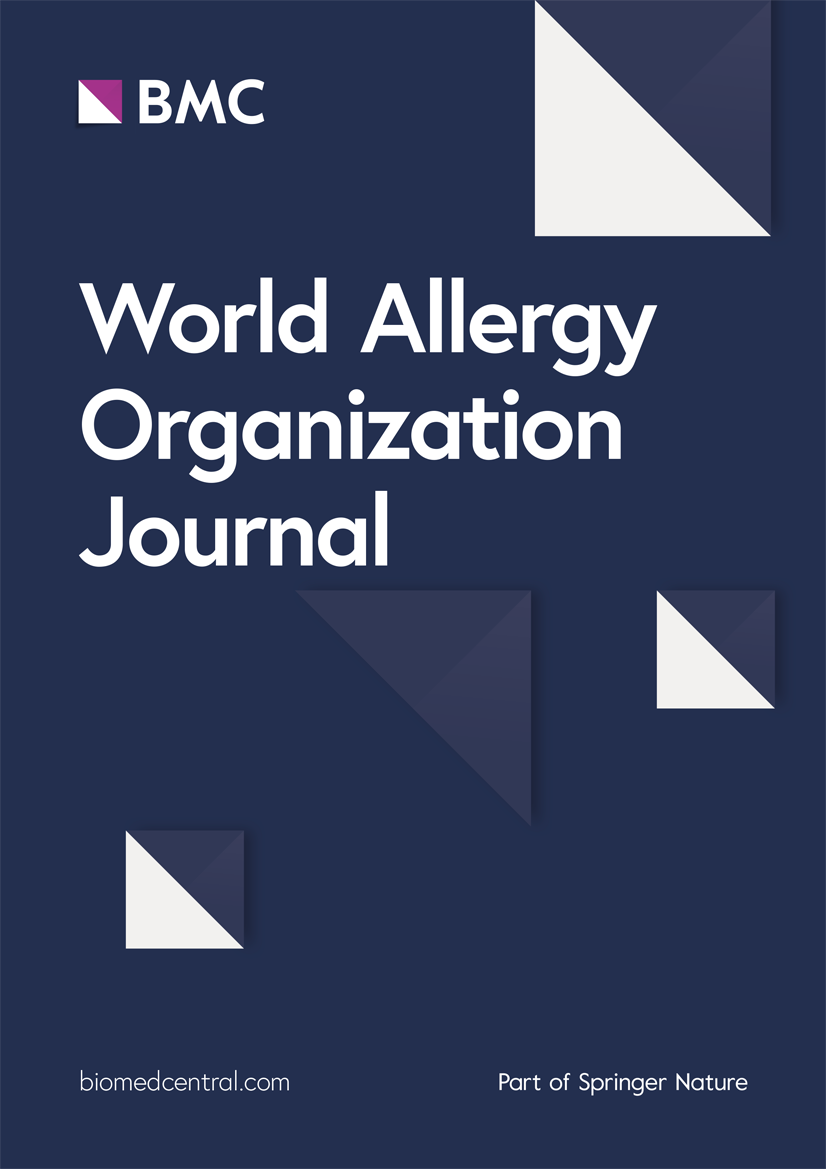Sensitization profiles to olive pollen allergens and allergic respiratory disease severity in patients from Jaén, Spain: A cross-sectional study
IF 3.9
2区 医学
Q2 ALLERGY
引用次数: 0
Abstract
Objective
To determine the molecular sensitization profile of patients allergic to olive pollen and evaluate its correlation with the type and severity of the allergic respiratory disease (ARD).
Patients and methods
Observational, cross-sectional study including patients aged 5–55 years with seasonal ARD (rhinitis and/or asthma) due to olive pollen sensitization from the Jaén University Hospital (Jaén, Spain), an area with prolonged high olive pollen exposure. Specific IgE (sIgE) levels to Ole e 1, Ole e 7, and Ole e 9 and clinical variables were considered. ARD severity was categorized according to the Allergic Rhinitis and its Impact on Asthma (ARIA) guidelines (rhinitis) and the Guía Española para el Manejo del Asma (GEMAv4.2).
Results
We included 1111 patients (mean [SD] age: 23.4 [12.7] years, 47.7% female) with asthma (87.8%) and rhinitis (96.9%). Ole e 1 sensitization was the most prevalent (79.6%), followed by Ole e 7 (62.0%) and Ole e 9 (50.8%); 60.3% of patients were sensitized to more than 1 olive pollen allergen and 19.2% had negative sIgE results. Ole e 1, Ole e 7, and Ole e 9 sensitizations were associated with asthma diagnosis and severity (p < 0.001 for all), Ole e 7 sensitization with rhinitis diagnosis (p = 0.006), and Ole e 1 and Ole e 9 with rhinitis severity (p = 0.007 and p = 0.006, respectively). The Ole e 1, Ole e 7, and Ole e 9 triple sensitization profile was associated with asthma diagnosis (p < 0.001) and severity (p = 0.029), and with rhinitis severity (p = 0.009).
Conclusion
Sensitizations to the olive pollen allergens Ole e 7 and Ole e 9 are prevalent in areas with prolonged high pollen exposure and become major allergens together with Ole e 1. In these areas, a considerable proportion of patients allergic to olive pollen have negative sIgE results. Triple sensitization to Ole e 1, Ole e 7, and Ole e 9 is associated with ARD severity and asthma diagnosis. The sensitization profiles based on molecular diagnosis (MD) may affect decisions regarding allergen immunotherapy treatment.
西班牙贾森病人对橄榄花粉过敏原和过敏性呼吸道疾病严重程度的致敏概况:一项横断面研究
目的了解橄榄花粉过敏患者的分子致敏谱,并评价其与变应性呼吸道疾病(ARD)类型和严重程度的相关性。患者和方法本观察性横断面研究纳入了来自西班牙贾文森大学医院(贾文森,西班牙)因橄榄花粉致敏而患有季节性ARD(鼻炎和/或哮喘)的5-55岁患者,该地区长期高橄榄花粉暴露。考虑Ole e1、Ole e7、Ole e9特异性IgE (sIgE)水平及临床变量。根据过敏性鼻炎及其对哮喘的影响(ARIA)指南(鼻炎)和Guía Española para el Manejo del Asma (GEMAv4.2)对ARD严重程度进行分类。结果纳入1111例哮喘(87.8%)和鼻炎(96.9%)患者(平均[SD]年龄:23.4[12.7]岁,女性47.7%)。ole1致敏率最高(79.6%),其次是ole7(62.0%)和ole9 (50.8%);60.3%的患者对1种以上橄榄花粉过敏原敏感,19.2%的患者sIgE结果阴性。Ole e1、Ole e7和Ole e9致敏与哮喘诊断和严重程度相关(p <;Ole e7致敏性与鼻炎诊断(p = 0.006), Ole e1和Ole e9与鼻炎严重程度(p = 0.007和p = 0.006)。Ole e1、Ole e7和Ole e9三重致敏谱与哮喘诊断相关(p <;0.001)和严重程度(p = 0.029),并与鼻炎严重程度(p = 0.009)有关。结论橄榄花粉高暴露区常见于橄榄花粉原ole7和ole9,与ole1一起成为橄榄花粉原的主要过敏原。在这些地区,相当一部分对橄榄花粉过敏的患者sIgE结果为阴性。Ole e1、Ole e7和Ole e9的三重致敏与ARD严重程度和哮喘诊断相关。基于分子诊断(MD)的致敏概况可能影响有关过敏原免疫治疗的决策。
本文章由计算机程序翻译,如有差异,请以英文原文为准。
求助全文
约1分钟内获得全文
求助全文
来源期刊

World Allergy Organization Journal
Immunology and Microbiology-Immunology
CiteScore
9.10
自引率
5.90%
发文量
91
审稿时长
9 weeks
期刊介绍:
The official pubication of the World Allergy Organization, the World Allergy Organization Journal (WAOjournal) publishes original mechanistic, translational, and clinical research on the topics of allergy, asthma, anaphylaxis, and clincial immunology, as well as reviews, guidelines, and position papers that contribute to the improvement of patient care. WAOjournal publishes research on the growth of allergy prevalence within the scope of single countries, country comparisons, and practical global issues and regulations, or threats to the allergy specialty. The Journal invites the submissions of all authors interested in publishing on current global problems in allergy, asthma, anaphylaxis, and immunology. Of particular interest are the immunological consequences of climate change and the subsequent systematic transformations in food habits and their consequences for the allergy/immunology discipline.
 求助内容:
求助内容: 应助结果提醒方式:
应助结果提醒方式:


